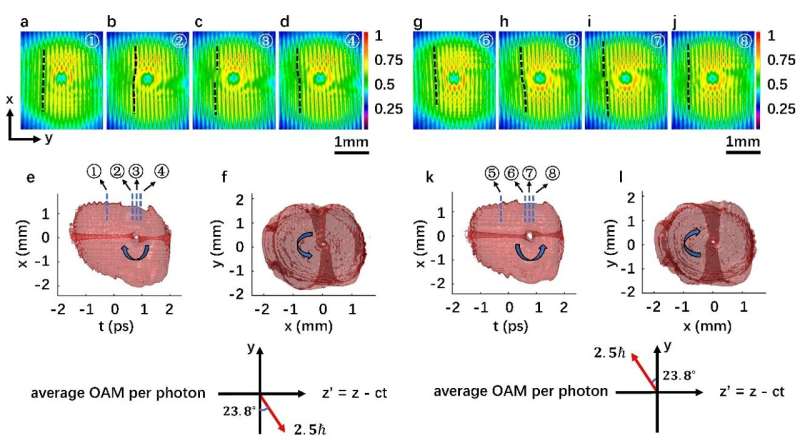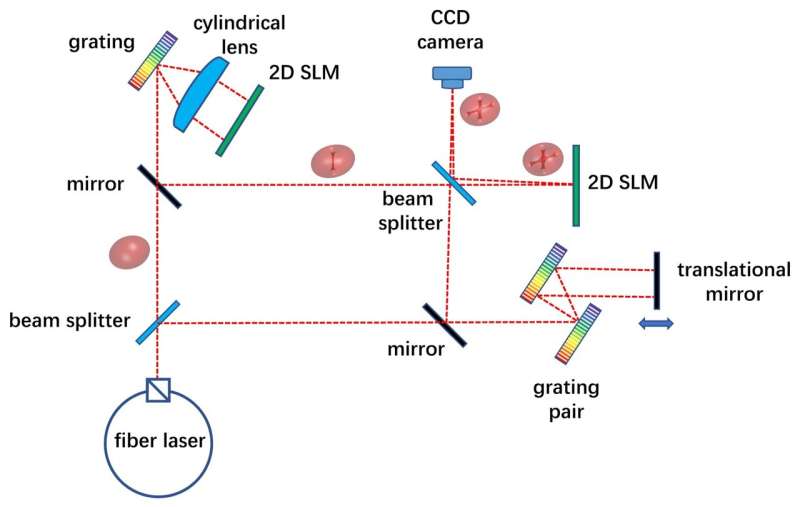Three-dimensionally oriented orbital angular momentum of light

Recently, National Science Review published online the research results on three-dimensionally oriented orbital angular momentum of light from Professor Qiwen Zhan's team at the University of Shanghai for Science and Technology.
Photonic angular momentum plays an important role in the interaction between light and matter. Photons can carry spin angular momentum related to the polarization and orbital angular momentum (OAM) related to the phase structure. Generally, the OAM direction is parallel to the propagation direction of light field, and the angular momentum carried by each photon is the product of the reduced Planck constant and topological charge.
Based on the collision between spatiotemporal vortices and spatial vortices, the researchers accomplished the accurate control of the three-dimensional orientation of photonic OAM, and added a new degree of freedom to angular momentum of light. The average OAM carried by each photon in the spatiotemporal wave packet generated by the experiment is controllable not only in three-dimensional direction, but also in magnitude. The value of OAM per photon is not limited to the integer multiple of the reduced Planck constant, but can also be a non-integer multiple of the reduced Planck constant. Furthermore, a traveling wave packet can contain the collision of multiple spatiotemporal vortices and multiple spatial vortices, enabling fast modulation of the magnitude and direction of photonic OAM in the spatiotemporal domain.
This research achieves the accurate control of photonic OAM in three-dimensional space and time domain, and thus is of great significance to the study of the interaction between light and metamaterials and the development of new photonic devices.

More information: Chenhao Wan et al, Photonic orbital angular momentum with controllable orientation, National Science Review (2021). DOI: 10.1093/nsr/nwab149
Provided by Science China Press




















